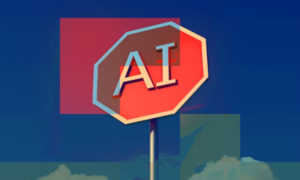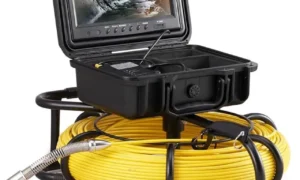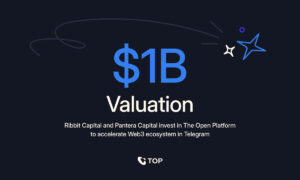Introduction
In recent years, agriculture has undergone a transformative revolution, shifting from traditional methods to innovative and sustainable practices. At the forefront of this agricultural evolution is vertical farming, a cutting-edge technique that leverages advanced technology to cultivate crops in vertically stacked layers. This blog article delves into the intricate relationship between technology and vertical farming, exploring the pivotal role that technological advancements play in reshaping the landscape of modern agriculture.
The Pioneering Role of Technology in Vertical Farming
1. Automation and precision farming
Vertical farming embraces the integration of automation and precision farming technologies to optimize crop production. Automated systems control various aspects of the cultivation process, including temperature, humidity, lighting, and nutrient levels. These automated environments ensure that crops receive the exact conditions they need for optimal growth, leading to higher yields and resource efficiency.
Precision farming involves the use of sensors and data analytics to monitor and manage crop conditions in real-time. This level of precision allows farmers to make data-driven decisions, adjusting environmental parameters to meet the specific needs of each crop. The result is a more efficient use of resources, reduced waste, and a higher quality of produce.
2. Advanced Lighting Systems
Light is a critical factor in plant growth, influencing photosynthesis, flowering, and fruiting. Vertical farms employ advanced lighting systems, such as LED technology, to provide the ideal spectrum and intensity of light for different crops. These systems can be tailored to mimic natural sunlight or adjusted to optimize growth during specific stages of the plant’s life cycle.
LED lighting not only enhances crop productivity but also contributes to energy efficiency. These systems can be fine-tuned to deliver the right amount of light at the right time, minimizing energy consumption while maximizing the yield per square foot of growing space.
3. Vertical farming and IoT integration
The Internet of Things (IoT) has found a home in agriculture, especially in vertical farming. IoT devices, such as sensors and actuators, are deployed throughout vertical farms to collect and transmit data in real-time. This data includes information about environmental conditions, nutrient levels, and crop health.
By leveraging IoT, farmers can remotely monitor and control the cultivation environment, enabling timely interventions and adjustments. This level of connectivity enhances overall efficiency, reduces the risk of crop diseases, and contributes to sustainable farming practices.
4. Hydroponics and Aeroponics Systems
Vertical farming often utilizes soilless cultivation techniques, such as hydroponics and aeroponics. These systems deliver nutrients directly to plant roots in a controlled environment, eliminating the need for soil. Hydroponics uses a nutrient-rich water solution, while aeroponics involves misting the roots with nutrient-laden air.
These innovative systems maximize resource efficiency by delivering nutrients directly to the plants, minimizing waste, and optimizing nutrient absorption. Additionally, soilless cultivation methods reduce the risk of soil-borne diseases and provide a more controlled environment for plant growth.
5. Artificial intelligence in crop management
The integration of artificial intelligence (AI) in vertical farming takes crop management to new heights. AI algorithms analyze vast amounts of data collected from sensors and other sources, providing valuable insights into crop health, growth patterns, and potential issues. This data-driven approach enables predictive modeling, allowing farmers to anticipate challenges and optimize cultivation strategies.
AI-powered systems can also facilitate crop monitoring through image recognition technology. Drones equipped with cameras capture high-resolution images of crops, enabling farmers to identify early signs of disease, nutrient deficiencies, or pest infestations. This proactive approach to crop management enhances overall productivity and reduces the reliance on chemical interventions.
6. Sustainable practices and resource efficiency
Vertical farming is inherently more sustainable than traditional agriculture. By utilizing technology to create controlled environments, vertical farms can operate year-round, independent of external weather conditions. This eliminates the reliance on seasonal cycles and opens the door to consistent, reliable crop production.
Furthermore, the controlled environments of vertical farms reduce the need for pesticides and herbicides, promoting eco-friendly and organic farming practices. The efficient use of water and nutrients in soilless cultivation systems minimizes environmental impact, making vertical farming a key player in the movement towards more sustainable agriculture.
Challenges and Future Prospects
While technology has significantly enhanced vertical farming, there are challenges that need to be addressed. Initial setup costs, energy consumption, and the need for skilled technicians can be barriers for some farmers. However, as technology advances and becomes more accessible, these challenges are likely to diminish.
The future of vertical farming holds exciting prospects. Continued advancements in AI, robotics, and sustainable energy solutions are expected to further optimize vertical farming systems. As the technology becomes more mainstream, it has the potential to revolutionize food production on a global scale, providing a sustainable solution to the growing challenges of traditional agriculture.
Conclusion
Technology plays a pivotal role in the success and viability of vertical farming. From precision farming and advanced lighting systems to IoT integration and artificial intelligence, each technological component contributes to the efficiency, sustainability, and productivity of vertical farms. As we navigate the challenges of a growing global population and environmental concerns, the fusion of technology and agriculture in vertical farming emerges as a beacon of innovation, offering a glimpse into the future of sustainable food production.

































